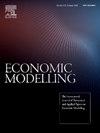网络中心性、多样化和投资组合回报:区块链行业的经济见解
IF 4.7
2区 经济学
Q1 ECONOMICS
引用次数: 0
摘要
资产配置仍然是新兴数字产业的核心话题,但传统模型通常假设资产之间的简单关系,而忽略了资产之间复杂的相互依赖关系。最近的研究引入了基于网络的方法,但大多数都未能考虑到多种形式的依赖及其经济影响。本研究探讨网络中心性和多元化如何影响中国区块链市场的投资组合绩效。为了获取企业间复杂的结构关系,我们利用多维关联度量和粒子群优化技术构建了一种新的多层综合网络。经验证据表明,投资中央企业能够持续提高回报,降低风险。然而,过度多元化会削弱投资组合的效率,暴露出风险降低与收益稀释之间的权衡关系。这些发现在不同的数据集、时间框架和投资组合策略中都是稳健的。通过将公司网络头寸与投资组合结果联系起来,本研究推进了关于结构复杂性下资产配置的文献,为波动和新兴数字市场中的投资者提供了新的见解。本文章由计算机程序翻译,如有差异,请以英文原文为准。
Network centrality, diversification, and portfolio returns: Economic insights from blockchain industry
Asset allocation remains a central topic in emerging digital industry, yet traditional models often assume simple relationships and ignore complex interdependencies among assets. Recent studies have introduced network-based methods, but most fail to account for multiple forms of dependency and their economic implications. This study examines how network centrality and diversification shape portfolio performance in China's blockchain market. To obtain the complex structural relationships between firms, we construct a novel multilayer synthetic network using multidimensional correlation measures and particle swarm optimization. Empirical evidence shows that investing in central firms consistently improves returns and lowers risk. However, excessive diversification weakens portfolio efficiency, revealing a trade-off between risk reduction and return dilution. These findings are robust across various datasets, timeframes, and portfolio strategies. By connecting firm network positions to portfolio outcomes, this research advances the literature on asset allocation under structural complexity, offering new insights for investors in volatile and emerging digital markets.
求助全文
通过发布文献求助,成功后即可免费获取论文全文。
去求助
来源期刊

Economic Modelling
ECONOMICS-
CiteScore
8.00
自引率
10.60%
发文量
295
期刊介绍:
Economic Modelling fills a major gap in the economics literature, providing a single source of both theoretical and applied papers on economic modelling. The journal prime objective is to provide an international review of the state-of-the-art in economic modelling. Economic Modelling publishes the complete versions of many large-scale models of industrially advanced economies which have been developed for policy analysis. Examples are the Bank of England Model and the US Federal Reserve Board Model which had hitherto been unpublished. As individual models are revised and updated, the journal publishes subsequent papers dealing with these revisions, so keeping its readers as up to date as possible.
 求助内容:
求助内容: 应助结果提醒方式:
应助结果提醒方式:


